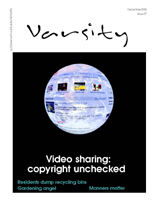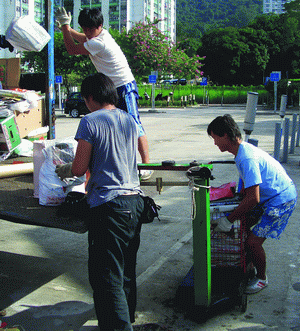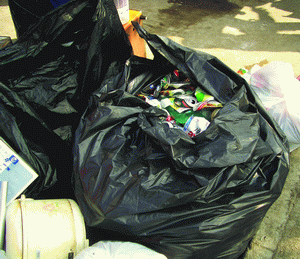


Our Community
Residents dump three-coloured waste separation bins
She found that the amount of recyclable materials collected had slid. “The quantity has kept declining in recent years. It has decreased almost by half,” she said.
Yet, the EPD considered the quantity of recyclable wastes had not decreased as a whole. A spokeswoman for the department said some of the materials were collected through the new scheme of source separation of domestic waste launched in January 2005 instead of the three-coloured waste separation bin system.
But the spokeswoman said it was d ifficult to provide figures about the total amount of recyclable wastes collected through the new scheme as the participating housing estates started implementing the programme at different times.
By October this year, about 350 housing estates or buildings have signed up to join the scheme. The number is equivalent to a quarter of those estates that have taken part in the three-coloured recycling bin campaign.
The EPD spokeswoman just said one-fifth of the housing estates that had implemented waste separation on each building floor reported satisfactory results with an overall 56 per cent increase in the quantity of recyclable wastes collected. The amount of paper, metals and plastics respectively showed a jump of 30 per cent, 440 per cent and 700 per cent. She did not give any absolute numbers.
Under the source separation of domestic waste scheme, the EPD encourages housing estates to put recycling facilities on every floor to make it more convenient for residents to dump domestic wastes so as to increase the quantity of recyclable materials recovered. The types of recyclable wastes collected will be included metal cans, mixed metal items, plastic bags and mixed plastics.
Asked whether the resources would be doubly allocated as there are two similar schemes, the EPD spokeswoman said: “It cannot be said that there are two schemes. The source separation of domestic waste is an expansion of the three-coloured waste separation bin system.”
She said although the three-coloured waste separation bins in housing estates had inadequacies, they were effective in reminding residents to take part in waste recovery activities and facilitating the collection of recyclable wastes.
Lawmaker Choy So-yuk said as the three-coloured recycling bins were placed in different buildings and locations and the amount of wastes to be collected was not certain, recyclers might find it more cost-effective if they bought the materials from residents
directly.

Collectors weigh waste materials before paying the residents.

Residents also sell aluminium cans and worn-out appliances to recyclers.
